Fighting the Apocalypse: technologies that will save humanity
Let's start with the bad news: a NASA-funded study showed that industrial society is expected to collapse in the coming decades due to growing inequality and excessive resource consumption. In Paris, authorities take emergency measures to reduce emissions to the environment — observers found that the air has been polluted to a dangerous level in recent weeks. In addition, global hunger may be closer than we think — climate change may affect food production earlier than previously thought.
Under the cut - a number of technologies that can save this civilization, among them - plants with increased efficiency and vertical station.
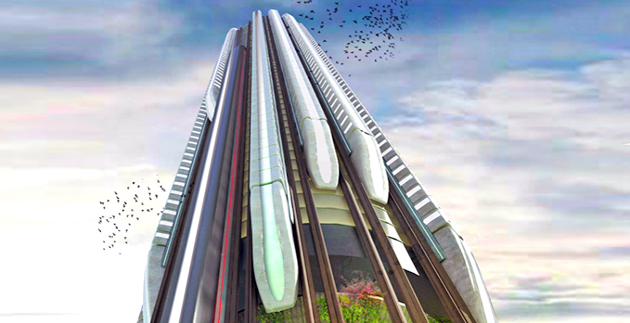
If you want to see what awaits us in the post-apocalyptic world, then take a look at Urban Jungle Street View - this application of the Swedish developer will turn your chosen location into a jungle. This technology will not save humanity, of course, but it may specifically you, dear readers, make you think about something.
')
Malaya Tulskaya street, Moscow.
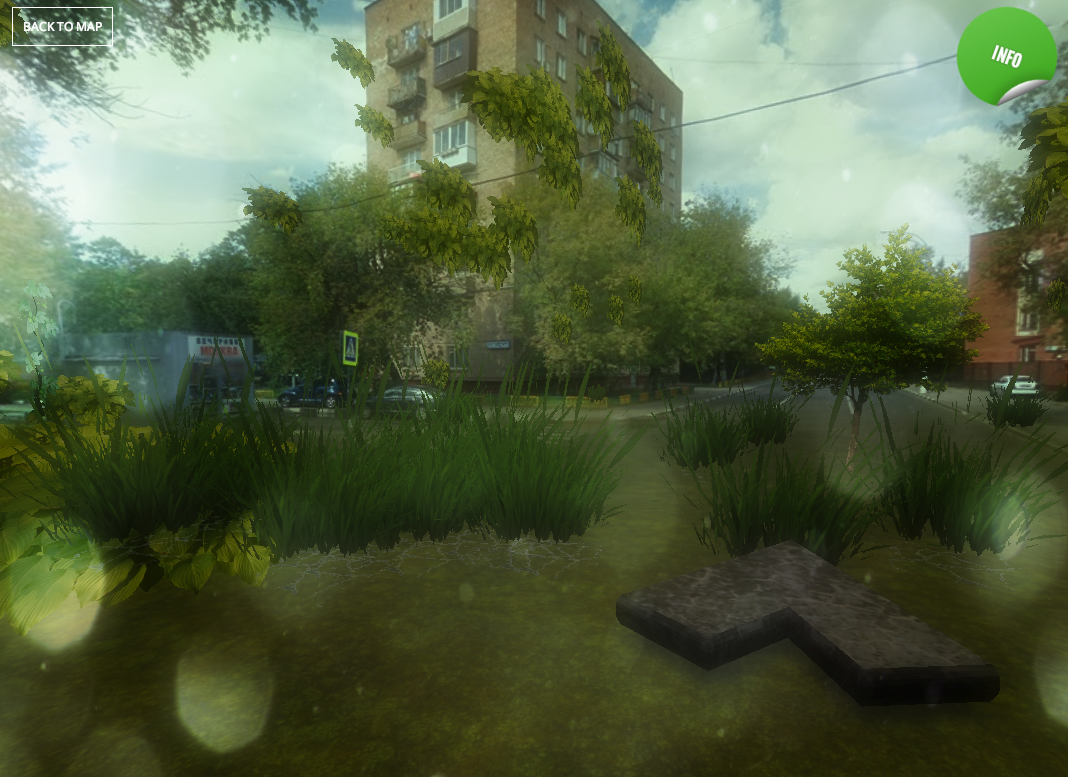
People around the world are taking steps to avoid the aforementioned collapse. The US Navy, for example, announced the launch of a project for the delivery of solar energy received in space to Earth. For these purposes, two modules were presented that will use reflectors to concentrate sunlight on the satellite, which, in turn, will send energy to the receiver on the Earth’s surface. If the project is approved, a team of robots will assemble it in space. Analysts from Goldman Sachs, by the way, the report predicts that in states, solar energy may be cheaper than fossil fuels.
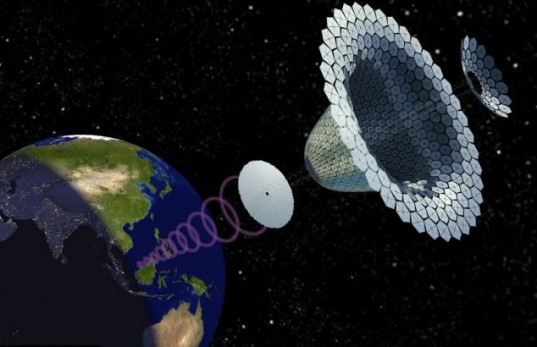
But how to keep the energy that the sun will give to humanity? This month, Tesla told about plans to build a “gig factory” for the production of lithium-ion batteries over the next three years. It will take 5 billion dollars. But the company is confident that in 2020 they will be able to produce more lithium-ion batteries than the whole world produced in 2013. It should be noted that the cost of batteries should be reduced by more than 30%, which, in turn, will allow the company to reduce the cost of the Tesla Model E sedan. And you thought it was done for the benefit of humanity? Although, 6,500 people will get jobs. And air pollution can reduce it. Still, they try for us.
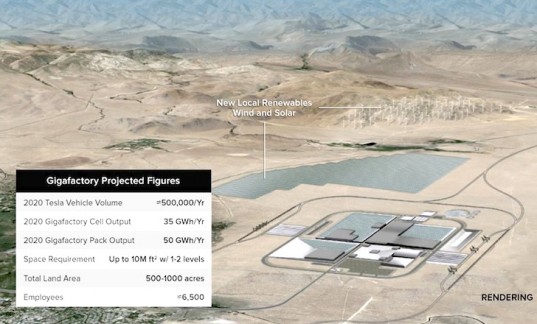
In Helsinki, at the same time, students are developing a car in which plastic is replaced by biomaterials - for example, wood. UPM helps them in this. It looks much more interesting than the standard for auto plastic.

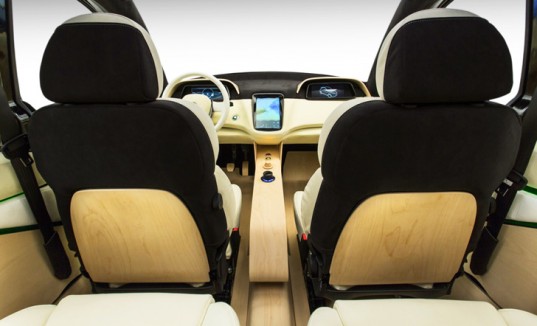
At the same time, Kolelinia Lab has developed a “half-bike” to save you from having to stand in a traffic jam. It is quite fun to jump on it, judging by the video, although I would have broken something just like that.
Of course, do not forget about the 3D-printing, which is not without reason that has become a trend lately. 3D printing technologies can change everything, including building construction. With the help of these technologies, the architects from DUS decided to print the whole house on the bank of one of the canals of Amsterdam.

This is one of the parts of the facade of the building. During construction, parts from various materials will be printed.
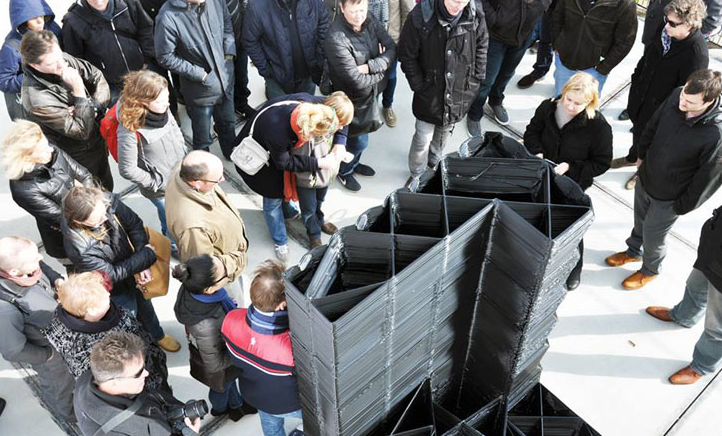
For the construction will use a 20-foot printer Kamermaker, or "Room Builder" translated into Russian.

There is one more news from the world of design and construction - in Colombia they created the highest “living wall” in the world. Plants from this wall with a height of 92 meters will not be able to blow off the wind - for this, local sustainable species were selected. Here and Urban Jungle Street View is not needed.
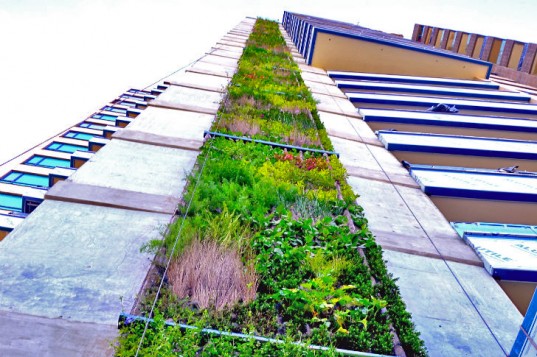
Let's now talk about individual tsunami protection. One of the Facebook employees got so confused with this idea that he spent two years building a special capsule. He began work because of the sad events that occurred in Fukushima in March 2011. The fact is that Chris Robinson met his wife in Fukushima, therefore this place is not an empty sound for him. Capsule Chris built in the backyard of his home in California.


As for buildings, this year, in the eVovo Skyscraper Competition, several interesting projects won. The images below are the building designated for Los Angeles. It should combine several of its areas: Downtown, Chinatown, Eco Park and Temple Beaudry. The project is described as an “architectural organism”, a gigantic structure, forcing people to abandon cars - after all, inside this building all the necessary infrastructure will be located within a half mile of your apartment.
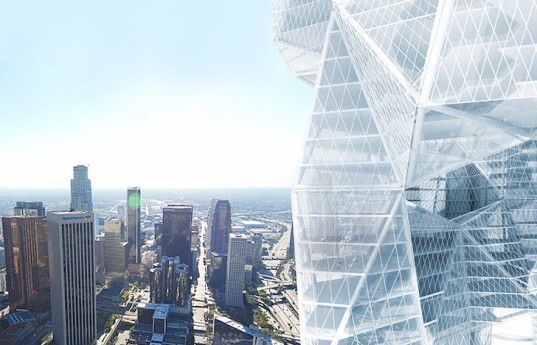
Inspired by the traditional Korean architecture, the creators of this concept have developed a building that can be built without a single nail. From the tree.
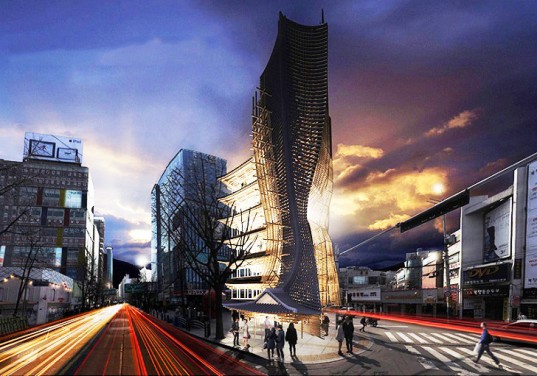

Also the winner in one of the nominations was the concept of a vertical station. Imagine how much space you can save in the city if the train stands on the wall of a building! Inside the train there will be compartments for passengers that will spin like a ferris wheel - so that the floor is always under your feet.
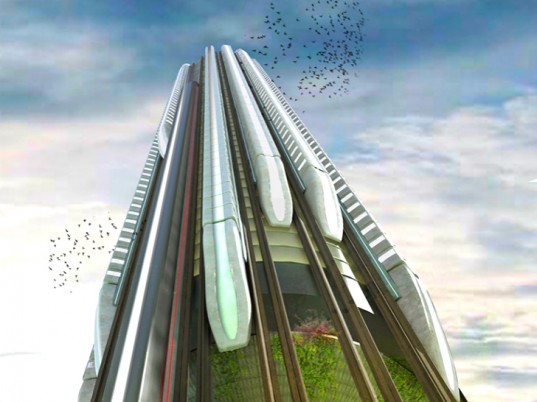

Returning to the topic of clean air, it should be noted that everyone knows about photosynthesis - how exactly this process occurs. However, the effectiveness of this process is not so high: most plants use only 10% of the sunlight they receive. A group of chemical engineers and biochemists from the Massachusetts Institute of Technology has taken up this challenge. Now they are trying to create more efficient plants.
Scientists add carbon tubes to plant chloroplasts to help these plants capture waves of light of that length, the waves of which they usually cannot absorb.
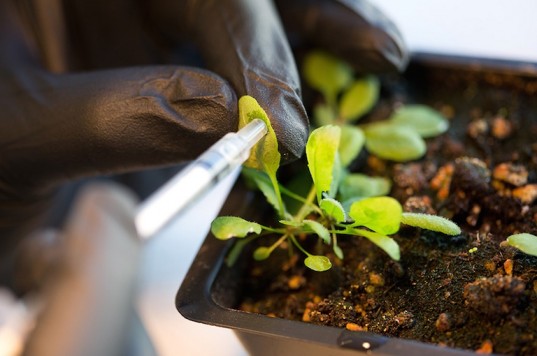
Under the cut - a number of technologies that can save this civilization, among them - plants with increased efficiency and vertical station.

If you want to see what awaits us in the post-apocalyptic world, then take a look at Urban Jungle Street View - this application of the Swedish developer will turn your chosen location into a jungle. This technology will not save humanity, of course, but it may specifically you, dear readers, make you think about something.
')
Malaya Tulskaya street, Moscow.

People around the world are taking steps to avoid the aforementioned collapse. The US Navy, for example, announced the launch of a project for the delivery of solar energy received in space to Earth. For these purposes, two modules were presented that will use reflectors to concentrate sunlight on the satellite, which, in turn, will send energy to the receiver on the Earth’s surface. If the project is approved, a team of robots will assemble it in space. Analysts from Goldman Sachs, by the way, the report predicts that in states, solar energy may be cheaper than fossil fuels.

But how to keep the energy that the sun will give to humanity? This month, Tesla told about plans to build a “gig factory” for the production of lithium-ion batteries over the next three years. It will take 5 billion dollars. But the company is confident that in 2020 they will be able to produce more lithium-ion batteries than the whole world produced in 2013. It should be noted that the cost of batteries should be reduced by more than 30%, which, in turn, will allow the company to reduce the cost of the Tesla Model E sedan. And you thought it was done for the benefit of humanity? Although, 6,500 people will get jobs. And air pollution can reduce it. Still, they try for us.

In Helsinki, at the same time, students are developing a car in which plastic is replaced by biomaterials - for example, wood. UPM helps them in this. It looks much more interesting than the standard for auto plastic.


At the same time, Kolelinia Lab has developed a “half-bike” to save you from having to stand in a traffic jam. It is quite fun to jump on it, judging by the video, although I would have broken something just like that.
Of course, do not forget about the 3D-printing, which is not without reason that has become a trend lately. 3D printing technologies can change everything, including building construction. With the help of these technologies, the architects from DUS decided to print the whole house on the bank of one of the canals of Amsterdam.

This is one of the parts of the facade of the building. During construction, parts from various materials will be printed.

For the construction will use a 20-foot printer Kamermaker, or "Room Builder" translated into Russian.

There is one more news from the world of design and construction - in Colombia they created the highest “living wall” in the world. Plants from this wall with a height of 92 meters will not be able to blow off the wind - for this, local sustainable species were selected. Here and Urban Jungle Street View is not needed.

Let's now talk about individual tsunami protection. One of the Facebook employees got so confused with this idea that he spent two years building a special capsule. He began work because of the sad events that occurred in Fukushima in March 2011. The fact is that Chris Robinson met his wife in Fukushima, therefore this place is not an empty sound for him. Capsule Chris built in the backyard of his home in California.


As for buildings, this year, in the eVovo Skyscraper Competition, several interesting projects won. The images below are the building designated for Los Angeles. It should combine several of its areas: Downtown, Chinatown, Eco Park and Temple Beaudry. The project is described as an “architectural organism”, a gigantic structure, forcing people to abandon cars - after all, inside this building all the necessary infrastructure will be located within a half mile of your apartment.

Inspired by the traditional Korean architecture, the creators of this concept have developed a building that can be built without a single nail. From the tree.


Also the winner in one of the nominations was the concept of a vertical station. Imagine how much space you can save in the city if the train stands on the wall of a building! Inside the train there will be compartments for passengers that will spin like a ferris wheel - so that the floor is always under your feet.


Returning to the topic of clean air, it should be noted that everyone knows about photosynthesis - how exactly this process occurs. However, the effectiveness of this process is not so high: most plants use only 10% of the sunlight they receive. A group of chemical engineers and biochemists from the Massachusetts Institute of Technology has taken up this challenge. Now they are trying to create more efficient plants.
Scientists add carbon tubes to plant chloroplasts to help these plants capture waves of light of that length, the waves of which they usually cannot absorb.

Source: https://habr.com/ru/post/216875/
All Articles